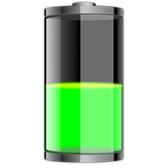Energy storage for Smart grids
Energy storage systems (ESS) are needed in the grid both at the consumer level and at grid level. There uses are many and include facilitation of the introduction of renewable energy sources (that are inherently random) such as wind power, for load leveling and energy demand management, for improving power quality, for financial incitement and more. Different types of ESS have widely different characteristics and are suitable for different tasks and situations.

The research work is largely focused on the general question of suitability of different ESS in different situations and takes different paths in different projects. The current projects investigate:
1) How to best determine the optimal ESS for a given situation and the suitability of a given ESS in that situation. The physical characteristics of the ESS are modeled, and simulated, via electrical circuits as well as investigated, characterized and validated via experiments.
2) How to combine different ESS to a hybrid energy storage system with superior characteristics compared to traditional single ESS. Is synergy achieved so the advantages but none of the disadvantages are obtained when combining different types of smaller ESS into a large whole? This is done via modeling, simulations and experiments.
3) Using ESS to mitigate privacy intrusions via smart meter readings, i.e., how well does realistic ESS perform if they are used to mask the user profile from intrusive and unwanted smart meter readings (from which user habits can be accurately deduced)? Losses and time responses will introduce delays that affect the masking. What control algorithms should be used? Can different energy sources at the user’s disposal, such as heating system and/or electrical vehicle be successfully used?
Project website can be found at
STOMP
.
The group currently consist of one associate professor and 3(+1) PhD students.
For more information and contact info:
Daniel Månsson,
www.kth.se/profile/manssond/
Finally, here is energy storage explained using the 1000 most common English words!
“When people all over the world turn things on, power is spent. This power comes to houses and cities down the power lines from the place where the power is made.
If power is made from water that falls, people can then decide when they want it, simply but letting the water fall and make power. Older ways of making power is often like this, that it can be made when we want.
But today power is sometimes made in newer ways, from the wind or sun. But it is then not sure that the power is made when people actually need it or want it (as they are perhaps not using their things at that moment).
But the power should still be used and not thrown away. This power, made from the sun or wind, needs then to be stored somewhere for times when it is needed. Like a glass of water that you have but do not want to drink now. You save it for later.
The power can be stored in different places and in different forms and this is what we study.”
